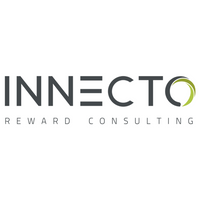How to design effective career pathways
Hand on heart, how many of your employees truly understand the career opportunities available to them inside your organisation? How confident are you as an HR practitioner that you have the structures in place to keep your best people engaged and motivated to stay beyond the scope of their current role, or a couple of years?
For too many of us the honest answer is “not very.”
Career development may appear somewhere on our business agendas, but all too often it’s hampered by poor frameworks, vague role requirements and inconsistent conversations leaving employees guessing about their futures. And when people can’t see their next move, they make one — for the door.
With people costs rising and skills gaps widening, this lack of visibility has become a strategic blind spot. Organisations simply cannot afford to treat career development as an afterthought. If you’re not investing in effective career pathways, you’re investing, inadvertently, in staff attrition.
Why career pathways matter
Replacing an employee is costly, and not just in recruitment spend. The hidden costs in lost productivity, team disruption and all that institutional knowledge going out the door are far higher. And yet, our employees continue to leave not because of pay but because of a perceived lack of opportunity.
According to LinkedIn’s 2024 Global Talent Report, employees who make an internal move within two years are 75% more likely to stay. The flip side? Four in ten workers admit they have no idea what other roles are open to them internally. That statistic should set alarm bells ringing. If employees can’t see their future in your business, how can you expect them to stay and build it with you?
Five key questions:
- Are your career pathways looking to the future? Too many frameworks are backward-looking, reflecting current structures rather than future needs. Career pathways must be built against the skills and capabilities you’ll need in the next few years — otherwise, you’re developing for yesterday’s workforce. So get started on that strategic piece.
- How transparent are your roles and skills? Do your employees know what’s required to progress, or are pathways hidden behind hierarchy and job titles? Traditional job evaluation is not enough; employees need clarity on the competencies and transferable skills that connect roles across functions.
- Who really owns career development? If employees are waiting for HR or line managers to tap them on the shoulder, you’re fighting a losing battle. Pathways need to empower people to take control of their own journey, with tools to explore, self-assess and take action and responsibility.
- Are your managers enablers or blockers? Without skilled and confident managers, career conversations can either become inconsistent or get swept under the carpet for another day. If managers are ill equipped to guide these conversations, they may be holding people back.
- Do your pathways reflect today’s careers? Flexibility is now key and that means that lateral moves, cross-functional experiences, skill-upgrades and short term project roles need to sit alongside traditional progression as a matter of urgency.
The role of tech in all this
This is where technology becomes a game-changer. Career pathways have too often lived in static documents or buried frameworks. God forbid, you still hold spreadsheets and word documents charting employees’ careers. Our people don’t want theory, they want visibility.
Tools like the new Innecto Pathfinder addresses this head-on by putting career ownership in the hands of employees. Instead of waiting for HR to dictate progression, employees can:
- Visualise career paths: exploring both lateral and vertical moves, complete with skills and competency requirements
- Set target roles: mapping from their current or aspirational position to a future destination
- Identify skill gaps: understanding what they need to progress and how to build it
- Gain real-time insights: with data that adapts to organisational changes and future priorities.
For HR leaders, this kind of technology will also reveal the bigger picture by surfacing hidden talent, breaking down silos and aligning progression with reward strategy and workforce planning. It closes the gap between HR’s intent and the employee’s lived experience.
The uncomfortable truth is that if you are not designing effective career pathways, you are already losing talent. Employees won’t wait for visibility, they’ll find it elsewhere. But the opportunity all this presents to us is equally powerful: with the right frameworks and digital tools we can give employees a clear line of sight into their future, empower them to take ownership, and align their ambitions with our strategy.
The all-important retention struggle will change and will be less about holding people in place and more about enabling them to move forward, with us. Really, the question is not whether you can afford to design career pathways, it’s whether you can afford not to?
Supplied by REBA Associate Member, Innecto Reward Consulting
The UK’s largest independent pay and reward consultancy, transforming pay into performance.








